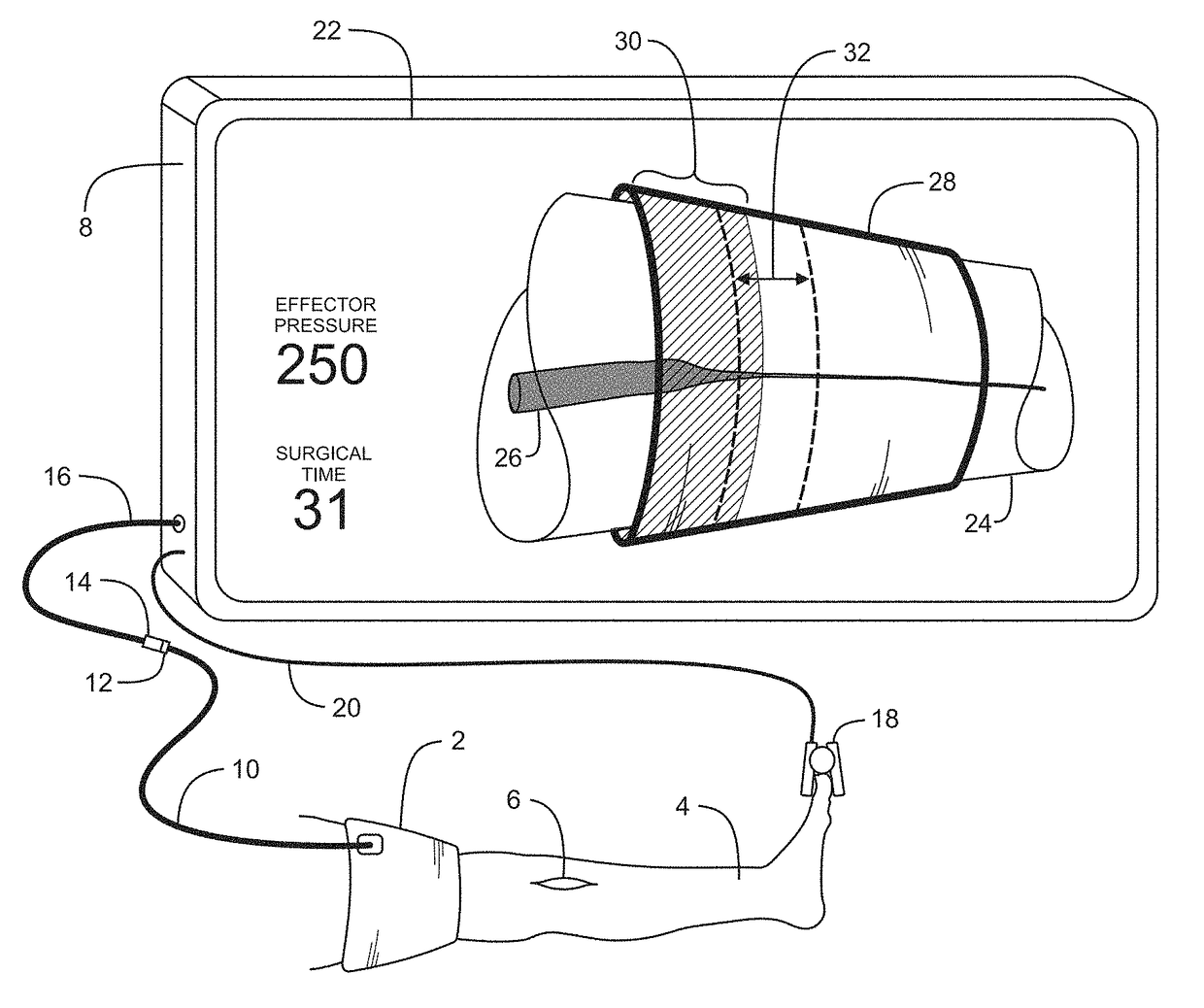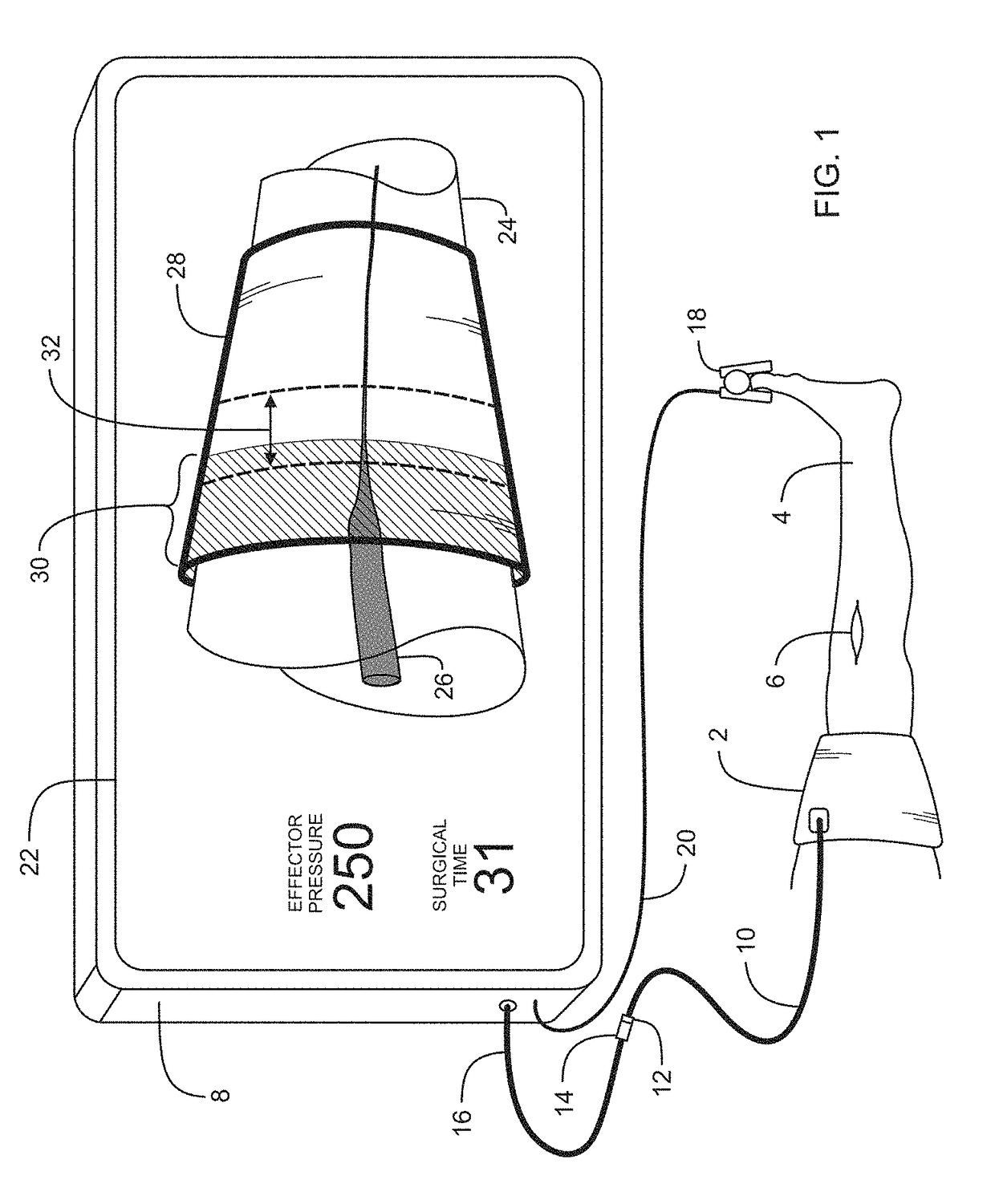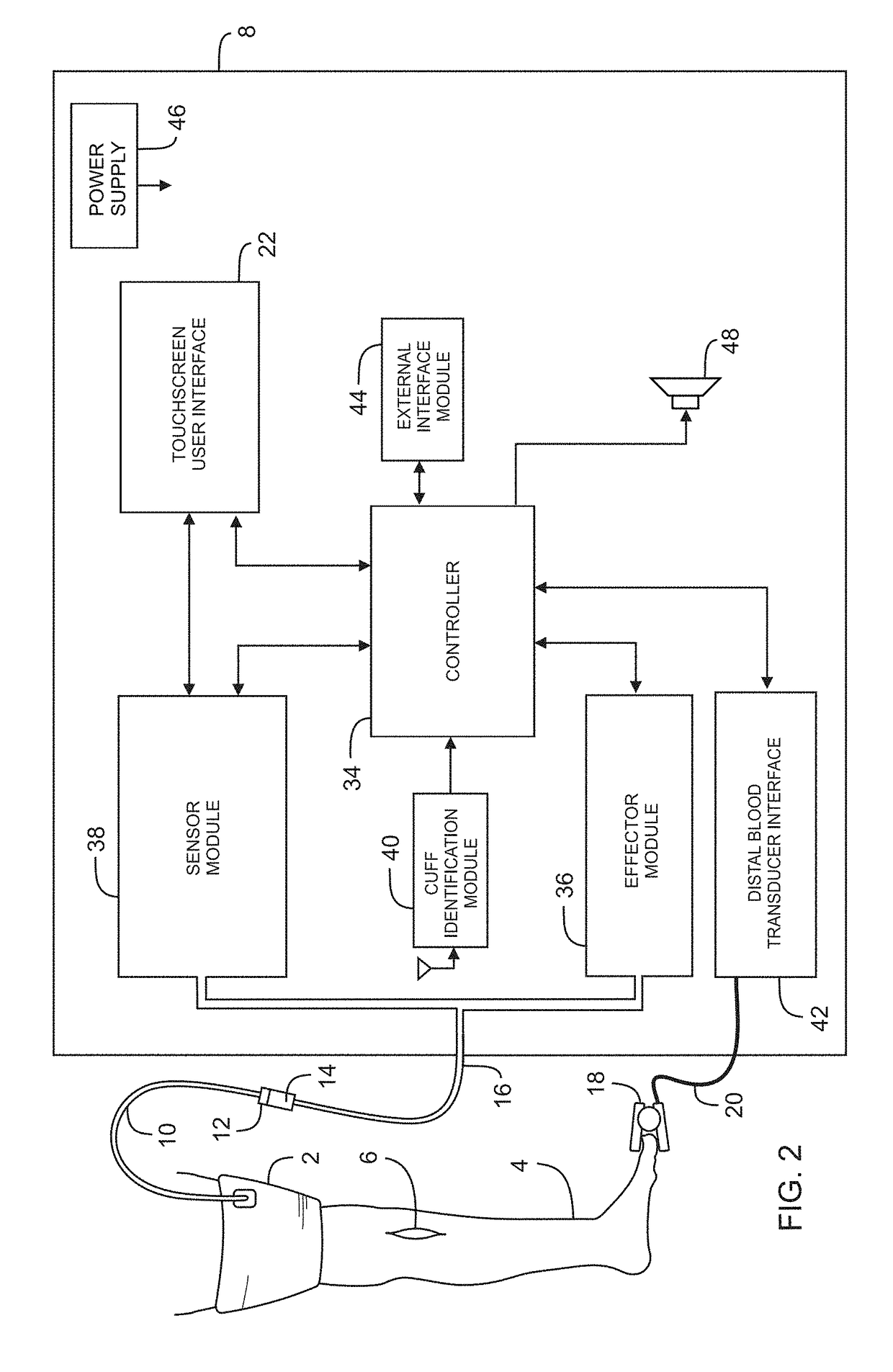Personalized tourniquet apparatus
a technology of tourniquets and equipment, which is applied in the field of pneumatic tourniquet systems, can solve the problems of high risk of tourniquet-related injuries to patients, sensor requirements, and disruption of pre-surgical workflow
- Summary
- Abstract
- Description
- Claims
- Application Information
AI Technical Summary
Benefits of technology
Problems solved by technology
Method used
Image
Examples
Embodiment Construction
[0020]The embodiments illustrated are not intended to be exhaustive or limit the invention to the precise form disclosed. They are chosen and described in order to explain the principles of the invention and its application and practical use, and thereby enable others skilled in the art to utilize the invention.
[0021]FIG. 1 depicts the tourniquet system of a preferred embodiment in clinical use. Tourniquet cuff 2 is shown encircling a patient limb 4 at a location proximal to surgical site 6 and pneumatically connected to instrument 8. Cuff 2 is a dual-purpose tourniquet cuff that effects the stoppage of blood penetration past the cuff when inflated and senses changes in blood penetration in the portion of the limb encircled by the cuff when blood penetration past the cuff is stopped.
[0022]Cuff 2 is a type of tourniquet cuff that has common predetermined parameters that makes it suitable as a dual-purpose cuff including: a single inflatable bladder having a length sufficient to surro...
PUM
 Login to View More
Login to View More Abstract
Description
Claims
Application Information
 Login to View More
Login to View More - R&D
- Intellectual Property
- Life Sciences
- Materials
- Tech Scout
- Unparalleled Data Quality
- Higher Quality Content
- 60% Fewer Hallucinations
Browse by: Latest US Patents, China's latest patents, Technical Efficacy Thesaurus, Application Domain, Technology Topic, Popular Technical Reports.
© 2025 PatSnap. All rights reserved.Legal|Privacy policy|Modern Slavery Act Transparency Statement|Sitemap|About US| Contact US: help@patsnap.com



